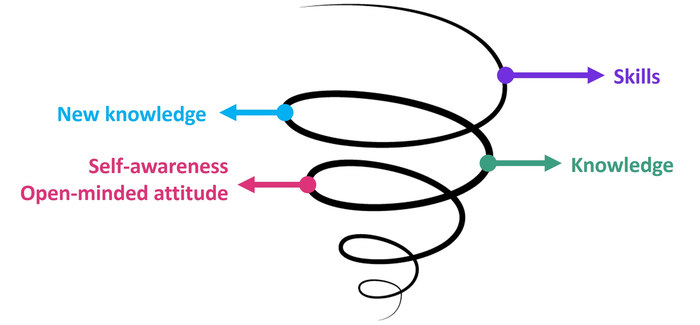Virtual teamwork provides many advantages for companies as well as employees. It offers the opportunity of working together regardless of location, allows for flexible work arrangements and companies benefit because they can access talents and experts from around the globe as well as benefitting from time differences to name but a few. And VITeams offer the chance and opportunities to enable synergies and thus find novel solutions to issues, develop products and thus benefiting from diversity.
Task: Benefits of virtual teamwork
What are the advantages and benefits some people working in VITeams mentioned you haven’t thought of before? To answer this question watch the following video clip on the advantages and benefits of virtual team work.
But in order to benefit from VITeams, companies as well as employees need to realise and accept that virtual teamwork requires a thorough understandings of collaborative work and a complimentary set of knowledge and skills as well as awareness and attitude. These dimensions are intertwined and can be captured in a set of competences linked to openness, communication, culture-reflexive knowledge and negotiating culture. Whereas some of the competences needed may be easier to develop, other may require more effort and time. Generally speaking, it can be argued that competence development is a lifelong process. At times it may even feel as if we are stagnating but then there will be moments of new challenges opening new opportunities to enhance our competences. Language proficiency may serve as an example. Using English as a lingua franca when working in VITeams is common but if it is not our mother language, we rarely attain complete and native –like fluency. This also means that there is always potential to learn and even more so with team members joining who bring along e.g. US-American English vocabulary, pronunciations common in India or accents typical for French second speakers.
Developing virtual intercultural competences and continue to do so offer the opportunity to transcend the limitations of our own world and world view, to change perspectives and appreciate commonalities and diversity alike. And it offers the opportunity to enable synergies. But for all of this to happen we need to accept that such a development takes place over time and requires a process of ongoing interaction and reflection. This is why the development of intercultural competence is often visualised through a spiral as the illustration below indicates:

Figure: Development of intercultural competence
Diagram developed by Thu Phong Vuong for this course
Intercultural competence also necessitates us to accept that if we manage one situation well this is not an assurance that the next situation will equally be dealt with adequately well. This is why we can speak about a process of maturity a continuous journey which, if we stay open-minded and ready to learn is a fascinating and personal enriching one for all.